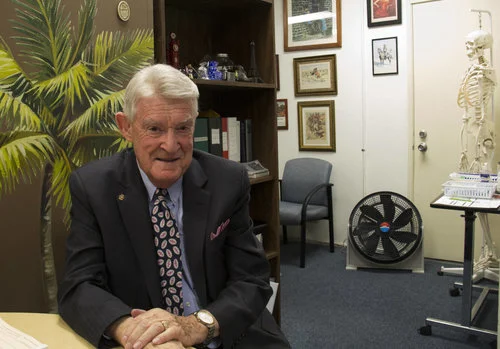Canada’s ‘Deeply Flawed’ Opioid Guideline
/By Pat Anson, Editor
Just six months after adopting an opioid prescribing guideline modeled after the CDC's guideline in the United States, they’re already having second thoughts in Canada.
An editorial published in the Canadian Medical Association Journal says the guideline is “deeply flawed,” may have contributed to several deaths, and has created “a climate of fear” among doctors and patients.
Like the opioid guideline released by the Centers for Disease Control and Prevention in 2016, the Canadian version strongly recommends that patients not receive opioid doses in excess of 90mg morphine equivalents daily (MED), and that patients receiving a higher dose by tapered to the “lowest effective dose” or stop getting opioids altogether.
“The Guideline neglects to warn physicians that tapering can put patients at high risk for overdose, because patients will lose tolerance, experience distressing withdrawal symptoms, and turn to other sources for their opioid,” warns lead author Meldon Kahan, MD, director of addiction treatment at Women’s College Hospital in Toronto.
Kahan helped write Canada’s 2010 opioid guideline, which recommended a much higher ceiling of 200mg MED. He says the current guideline fails to address addiction or how to treat opioid use disorder with medications such as buprenorphine and methadone.
“By not discussing these treatments, the Guideline encourages physicians to manage opioid addiction through tapering, which is usually ineffective and sometimes dangerous,” wrote Kahan.
“The Guideline is contributing to a climate of fear around opioid prescribing. We are aware of several instances of death following rapid tapering or abrupt discontinuation. The Guideline needs extensive revision to ensure patient safety; until this is done, the medical community and medical regulators must not use the Guideline as the standard for opioid prescribing.”
Over 50 clinicians, academics, patients and “safety advocates” helped draft the Canadian guideline. Among them were three board members of Physicians for Responsible Opioid Prescribing (PROP), an anti-opioid activist group that played a key role in drafting the CDC guidelines: PROP Vice-President Gary Franklin, MD, Mark Sullivan, MD, and David Juurlink, MD.
One major difference between the Canadian guideline and the CDC’s is that the latter is only intended for primary care physicians, while Canada’s guideline applies to all prescribers, including family physicians, pain specialists and nurse practitioners.
Nearly 1 in 5 Canadians suffer from chronic pain and Canada has the highest rate of opioid prescribing outside the United States. Opioid prescribing peaked in the U.S. in 2010, but prescriptions are still trending upward in Canada. A report released last week by the Canadian Institute for Health Information shows that the total number of opioid prescriptions rose by nearly seven percent between 2012 and 2016, although fewer pills are being prescribed.
Opioid overdoses are soaring in Canada, as they are in the United States, but increasingly the deaths involve illegal opioids such as heroin and illicit fentanyl, not prescription painkillers.
Minnesota’s Tough New Guideline
Canada may be having second thoughts about its guideline, but Minnesota appears close to adopting even tougher rules for prescribers – which would arguably be the most draconian anywhere in the United States.
The draft guidelines released last week by the Minnesota Opioid Prescribing Work Group (MOPWG) would limit new opioid prescriptions for acute, short-term pain to just three days’ supply and a total of no more than 100mg MED – meaning the average daily dose would be less than 34mg MED.
Treatment for acute pain that lasts longer – for up to 45 days – would be limited to a total of 200mg MED every 7 days. Prescriptions would also have to be obtained weekly.
Daily doses for chronic pain lasting longer than 45 days would be limited to 90mg MED – if a patient is able to get them at all. The guideline specifically discourages doctors from prescribing opioids for fibromyalgia, migraine, “uncomplicated” back pain, and just about every other chronic pain condition. It also strongly recommends that doctors discuss tapering with patients on long term opioid therapy, "regardless of their risk of harm."
“Opioid analgesics should not be used to manage chronic pain. There is very limited shorter-term evidence on the efficacy of opioids for chronic pain management and a growing body of evidence of significant harm associated with use,” the MOPWG said in a statement.
The MOPWG was chaired by Chris Johnson, MD, an outspoken critic of opioid prescribing who is a board member of PROP, as well as the Steve Rummler Hope Foundation.
“If pain doctors still think these medicines are effective, then they have a lot of explaining to do and their competence and professionalism deserve to be challenged,” Johnson said a few months ago.
If opioids are prescribed long term, Minnesota's guidelines recommend that doctors evaluate a patient’s mental health, as well as any history of physical or emotional trauma. The guidelines claim that patients with a history of trauma are more likely to develop chronic pain.
“Patients with chronic pain tend to report higher rates of having experienced traumatic events in their past, compared to people without chronic pain. A traumatic event is an event (or series of events) in which an individual has been personally or indirectly exposed to actual or threatened death, serious injury or sexual violence,” the guideline states.
“Traumatic events illicit a number of predictable responses, including anxiety, physiological arousal and avoidance behaviors. A growing body of evidence finds that individuals who have experienced trauma may develop a persistently aroused or reactive nervous system. When confronted with an acute injury or pain following a surgical procedure, people whose nervous systems are already in a state of persistent reactivity due to a past trauma may be more likely to transition for acute to chronic pain.”
If adopted, Minnesota’s draft guideline would only apply to patients covered by the state’s Medicaid programs. However, they are expected to influence all prescribers, as well as insurance company policies and state regulatory boards. The guideline is available for public review and comment for the next 30 days.




































